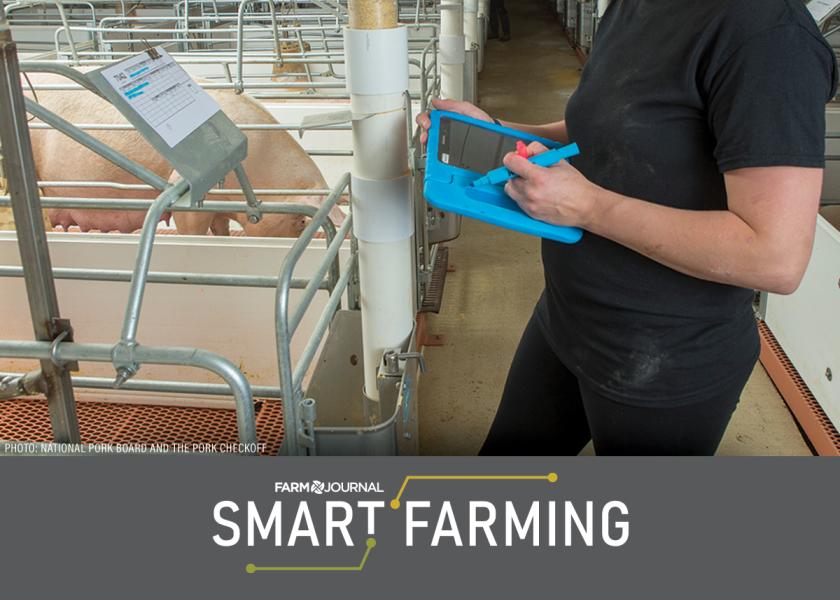Sow Death Loss Reaches All-Time High in 2023: What Can Producers Do Now?

The practical, slat-level experience Brad Eckberg gained years ago working on a sow farm has provided him with a unique vantage point in his role as a business analyst at MetaFarms, Inc. But one of the greatest opportunities he’s had is combining the data he analyzes everyday with time spent on customers’ sow farms of all sizes.
Unfortunately, the topic of sow death loss comes up frequently and weighs heavy on producers’ minds. The latest MetaFarms reports show sow death loss in 2023 was at an all-time high at 15.3%. That’s up 1% from a year ago – a trend that continues to move in the wrong direction.
Although there isn’t a magic bullet to reduce sow death loss, Eckberg offers some things for producers to think about based off the time he has spent looking at data, talking to producers and visiting a variety of operations.
“Animal husbandry needs to be the No. 1 focus,” Eckberg says. “I think that's probably one of the lowest hanging fruits to improve sow death loss.”
Identify troubled animals
When it comes to animal husbandry, it’s important to make sure staff are properly trained on identifying troubled animals, he says.
“When I think back to the years I spent working in the sow barn, I think we could have done things differently,” he says. “For example, when we would see a sow that would be off feed, we’d go give her a shot and say ‘see you tomorrow.’ The next day, we might see a sow tiptoeing a little bit and we'd give her a shot and say ‘see you tomorrow.’ Instead, could we have put a mat under the sow to help her out? Move her to a different environment to improve her healing process?”
Not only is it the right thing to do for the animal, but he says science continues to show how improving animal husbandry improves animal performance and profitability.
It’s challenging, however, when labor turns over frequently and farms struggle to fill the needs in the barns.
“I wonder if some of that labor shortage is impacting the ability to identify animals that are at risk of not making it,” Eckberg says.
Prioritize gilt development
Never forget the importance of gilts on the farm, he continues. Gilts are the foundation of a sow farm. Although that’s not an earth-shattering statement, Eckberg says how you handle your gilts is ultimately going to determine your long-term success on the sow farm. That means spending extra attention on developing gilts will pay off in the end.
“Reflecting back 20 years ago, we didn’t spend enough time in the gilt developers. For example, could we have spent more time with heat detection? Studies show capturing at least one heat, no-service on an animal will drastically improve your P-1 and lifetime performance,” he says.
He recently looked at the low number of heat, no-service gilts entered into the MetaFarms database in 2021. Over 60% of the gilts entered did not have a heat, no-service. That’s about 250,000 gilts that did not have a recorded heat, no-service.
“If you're not capturing that information within your record keeping platform, how do you really know?” he asks. “It's by way of the stone age a little bit with pen and a piece of paper. I've got my notebook, and I can go back and look, but we're all busy. Having that information at our fingertips by using a platform to track that information makes a difference.”
Eckberg believes sow death loss can be reduced by providing excellent animal husbandry, paying attention to details and capturing that information so it can be used to make future decisions.
Editor’s Note: This is the second story in a four-part series. See the first story here. The numbers shared in this story are preliminary 2023 numbers. The 2023 MetaFarms database represents 1.1 million sows from 460 farms as well as 24 million nursery pigs started and about 11 million single-stocked wean-to-finish pigs in 4,000 groups. As data flows in, updated numbers will be released from MetaFarms. MetaFarms does not release information on its customers, and follows strict benchmarking rules about which data is included in reports.
More from Farm Journal's PORK:
The Superpower the Industry Needs on Swine Farms Now
Preweaning Piglet Mortality Hits Five-Year High
Mortality Continues to Challenge Pork Producers
Production Analysis Summary for U.S. Pork: Use the Data to Your Advantage







